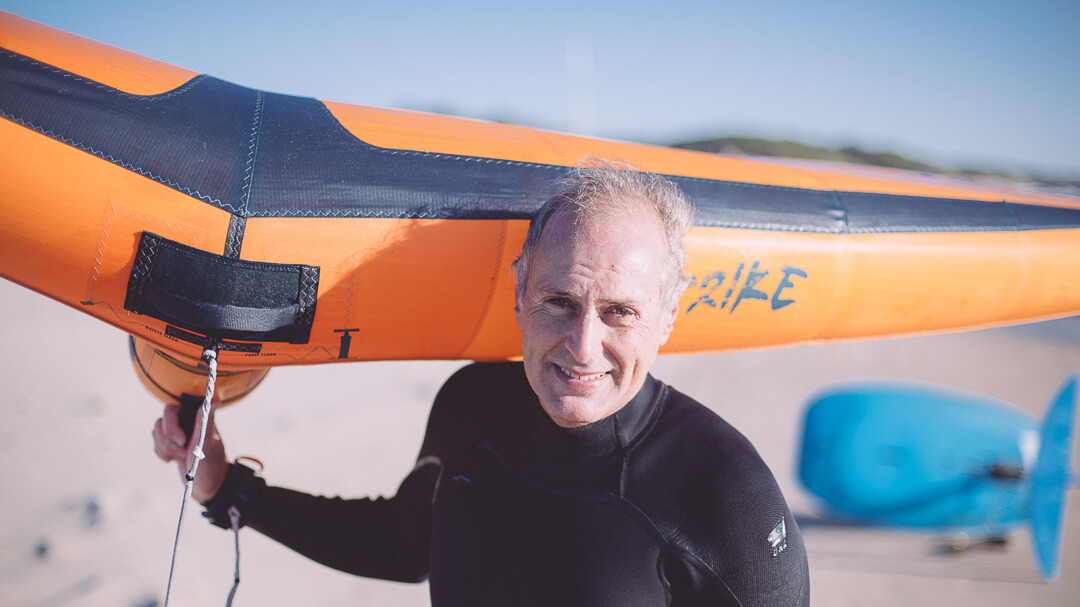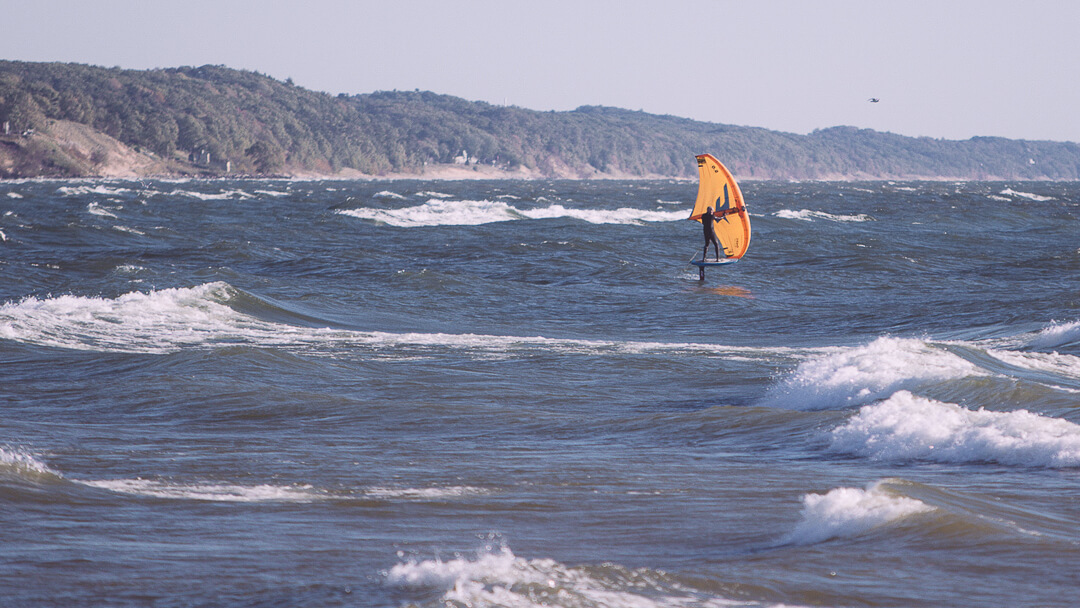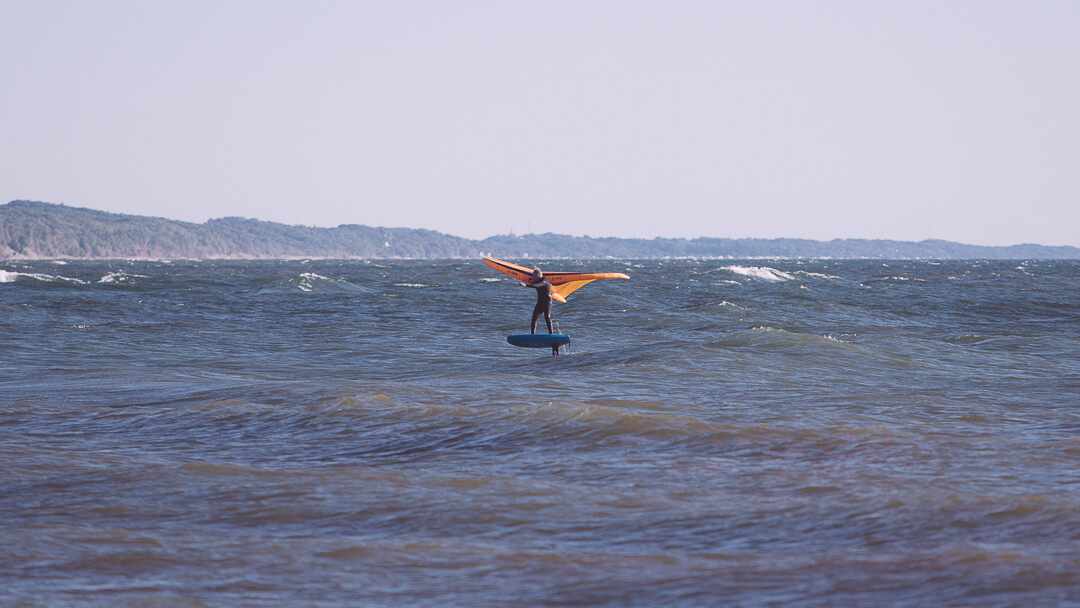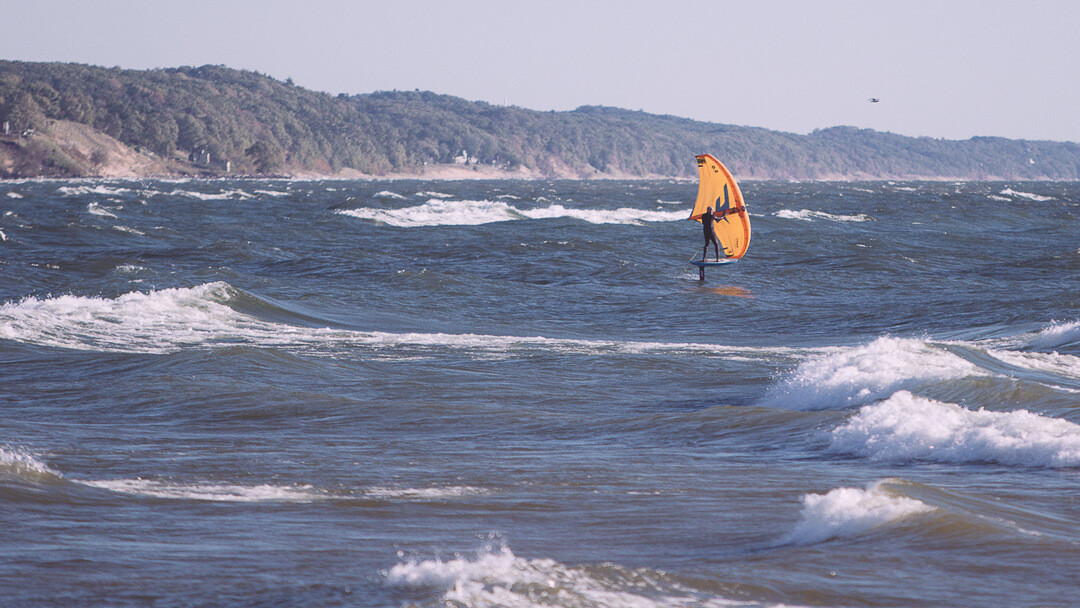3 Things to Consider When Buying a Wing Foiling Hand Wing

Should You Use a Wing With or Without Windows?
Safety and visibility are a couple of top priority issues for wing foiling. If you will be riding in a popular area with lots of other people in the water, you should probably get a wing with windows. The last thing you want to do is crash into another wingfoiler, kiteboarder, kitesurfer, surfer, or paddleboarder and wreck their day.
If you’re riding in an area where you aren’t dealing with many other riders out there on the water, then you might not need a wing with windows. That’s totally up to you.
For those wing foiling and snow winging in cold climates, you may be concerned with how well the window material will hold up in those conditions. We haven’t personally experienced any material breakdowns due to cold temps, but only time will tell.
Another factor regarding windows is the ability to easily roll and pack your wing without worrying about damaging the window material. Since each brand designs their window locations differently, you’ll need to take your time and figure out the best way to pack down each different wing that you may have. Not a big deal, but definitely worth doing it right, otherwise you risk damaging your wing.
Considerations:
- Safety and visibility
- Cold weather breakdown
- Damaging the window by folding
Photo Credits: Bryan Elkus | BryanElkus.com | @BryanElkus

Wing Foiling with Handles or a Boom?
As wing foiling brands continue to experiment with all kinds of different handle and boom configurations, you’ll first need to decide which style you actually prefer.
If you're coming from windsurfing or sailboarding, you may already be used to using a boom, so that might make the most sense for you. Many people like booms because they allow you to place your hands anywhere you like and make for a more custom ride. Seems like a solid tradeoff for a few more minutes of setup time that may be needed with a boom.
At present, there are only a handful of companies using booms on their wings.
With regard to handles, most wing makers are placing them along their center strut at the most appropriate locations that their R&D determines to be most effective for power and handling.
Some riders find it intuitively easy to jibe and handle their wing via the use of a boom, while others like the simplicity of a wing with handles. Again, this boils down to personal preference.
Considerations:
- Hand placement
- Setup time
- Jibing and handling

How Many Inflation Ports Should Your Wing Have?
As of right now, most manufacturers are making their inflatable hand wings with either one or two inflation ports.
While a single inflation port allows for easy setup and tear down of your wing, you won't be able to pressurize your wing's leading edge and strut to a different PSI. Not a major issue, but some riders like a really firm leading edge and may pressurize theirs a few pounds more than their strut. Again, this is totally a personal preference.
Conversely, it does take a second longer to inflate a wing via two inflation ports. However, you won't run the risk of accidentally pulling the connection tube between your leading edge and center strut and have an accidental deflation while on the water.
Given that we're almost always coming ashore with a wet wing, it is nice to have the option of leaving your center strut inflated for easier drying. Just deflate the leading edge and wrap both wings loosely around the inflated center strut, like a burrito. Then, when you get back home, you can easily unfurl your wing and prop it up to dry.
Considerations:
- Variable pressure options
- Setup and tear-down time
- Easier drying
Related Videos:
Subscription Links:
Click Below to Contact Us:
- P | 800.622.4655
- E | Kiteboarder@MACkite.com
- C | LIVE Chat Messenger

Recent Posts
-
North Navigator Pro Quick Release | How to Swap Yours Out With Ease
What You Need Before starting the replacement process, ensure you have all the necessary t …18th Apr 2024 -
Foil Drive | Essential Tips to Supercharge Your First Session
The Foil Drive makes your foiling life easier. You'll get up easier and catch more waves, …17th Apr 2024 -
2024 Duotone Slick Wing Review | What's New in This Year's Model?
The Duotone Slick has been a favorite of many for several years. Pros love it for its speed, …15th Apr 2024




